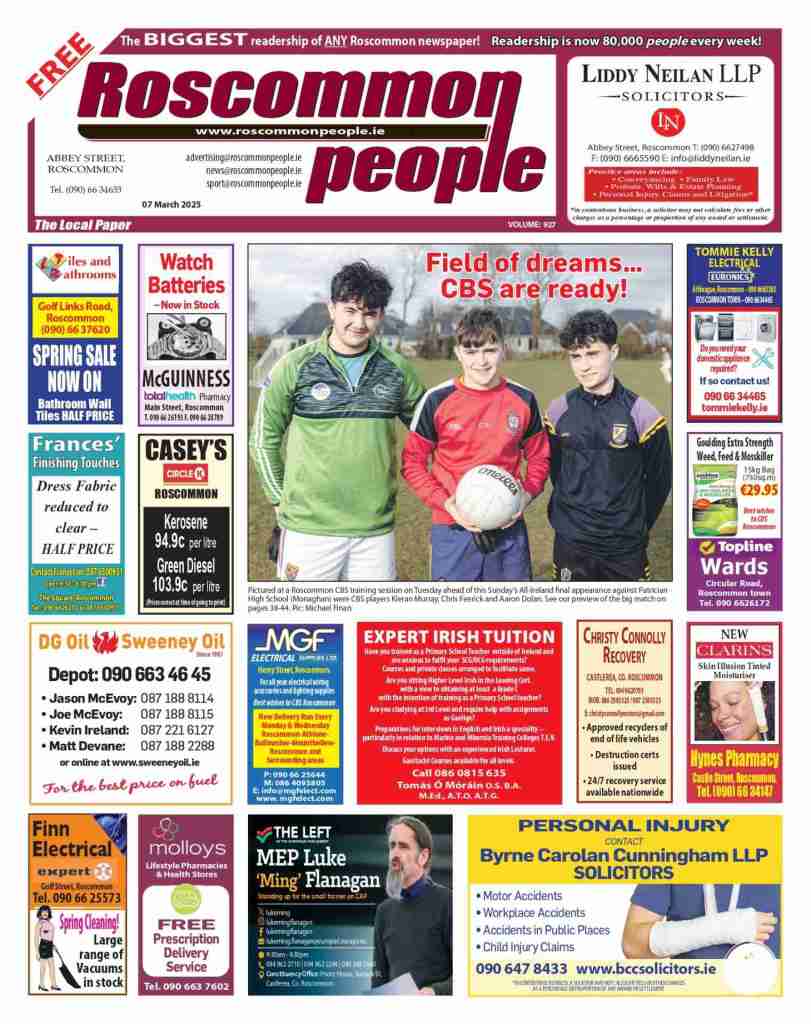 1964: Before the Liston fight…
1964: Before the Liston fight…
“Ain’t Liston ugly? He’s too ugly to be the world champ. The world champ should be pretty, like me. I predict that Liston will go at eight to prove that I am great. If he wanna go to heaven, I’ll get him in seven. He’ll be in a worse fix if I cut it six. And if he keeps talkin’ jive, I’ll cut it to five”
1964: After the Liston fight…
“I knew I had him in the first round. Almighty God was with me. I want everybody to bear witness. I am the greatest! I shook up the world! I’m the greatest thing that ever lived. I don’t have a mark on my face, and I upset Sonny Liston, and I just turned 22-years-old. I must be the greatest. I showed the world. I talk to God every day. I shook up the world. I’m the king of the world! I’m pretty! I’m a bad man! I shook up the world! I shook up the world! You must listen to me. I am the greatest! I can’t be beat! I am the greatest! It was no match. I want the world to know I’m so great that Sonny Liston was not even a match. I don’t have a mark on my face. In the fifth round, I couldn’t see a thing. My face was burning and I whupped him. He couldn’t hurt me. I’m the prettiest thing that ever lived. I shook up the world!”
– It’s 1964, and Cassius Clay, rank outsider and emerging loudmouth, well…he shakes up the world.
I discovered Muhammad Ali in 1970. It was the ‘two names’ thing that stopped me in my tracks. I was a child, watching a black and white film on our small telly. In those days, the TV reception was prone to being fuzzy. The rabbit’s ears – the name given to the aerial which stood on top of the telly – had to be humoured. If someone wiggled those ears, it usually restored vision.
That film caught my attention, even as a small child. Because of the ‘two names’ thing. Who was this man? This incredibly brash, trash-talking, pretty (his word) American boxer…it seems Clay and Ali was the same man. And what a man…
What had I missed before 1970? Quite a bit. Clay was born in Louisville, Kentucky in 1942. After winning Olympic Gold in Rome in 1960, he turned professional, and immediately began chasing his destiny. Nobody had ever seen anything like him. He boxed with astonishing speed. He danced in the ring. He TALKED to and taunted opponents. He promoted his fights with outrageous stunts, and predictions, usually in rhyme, of what round he would win in. Most of the boxing press wanted to see the young upstart’s ass kicked.
Sonny Liston would surely see to that. Liston was a brute. Most heavyweight boxers in those days were big, mean, sullen bruisers. Not into comedy, or poetry. When Clay earned a title fight with Liston – the toughest bruiser of them all – the boxing establishment licked its lips: the Louisville Lip would be licked, and put back in his place.
Instead, Clay truly did shake up the world. Watch it on Youtube. 1964, Clay v Liston. When the dazed champion refused to leave his corner for the seventh round, the history of boxing changed in those few dramatic seconds.
Realising that his moment of destiny has come, Clay danced in the middle of the ring – even Michael Flatley’s eyes would glaze over at the speed of the footwork – and raised his arms in triumph. Then Clay climbed on to the ropes and addressed the world. “I am the greatest! I shook up the world! I shook up the world!” At 22, he had become the youngest ever World Heavyweight Champion. He could talk like nobody else. And he was pretty!
Shortly after the Liston fight, Clay converted to Islam and changed his name to Muhammad Ali. He defeated Liston in their return bout, and dispatched all contenders. But when Ali refused to join the army, he was stripped of his title and his boxing license was suspended. Over three years in the wilderness followed. When you consider that he didn’t have a single fight from the age of 26 to 29, it makes his career achievements all the more impressive. He had lost his peak years, yet most observers still consider Ali to be the greatest of them all.
Shortly after I’d discovered Ali, we moved to a country house outside Rooskey. Green fields, rolling hills, fresh air, new friends. Not much sport on our black and white TV. I don’t remember the 1970 World Cup (sorry, Pele). By now I was fascinated with Ali. We all were. Maybe partly because we only got to see these thrilling World Heavyweight Boxing fights every now and again. They were something else! And always (it seemed) at 3 or 4 am in the morning! Such excitement!
Muhammad Ali. Joe Frazier. Heavyweight Championship of the WORLD! 15 ROUNDS! Madison Square Gardens! INTRODUCING…in the red corner! Ladies and Gentlemen! These words, these new phrases, were beyond exciting. In Rooskey, we rose at 2 or 3 am, adjusted the rabbit’s ears, and waited for this unparalleled glamour and drama.
An early highlight of Ali’s comeback from suspension was the first of three epic fights with ‘Smokin’ Joe’ Frazier, an opponent Ali seemed to take particular pleasure in taunting (“Joe Frazier’s so ugly, when he cries, the tears run down the back of his head”). You suspect there was always mutual respect there. Frazier went on to become World Champion, before being destroyed by the fearsome George Foreman. In that 1973 bout, scowling Joe knocked Frazier down six times!
That’s relevant, because Ali v Foreman was coming. This was Nasty George, not the Smiling George of later years. If you’d ask George Foreman for a cookery recipe in those days, you’d want to have a getaway car ready. When Ali, by now aged 31, faced Foreman, hardly anyone gave the challenger a hope of winning. Some even feared for Ali’s life. Foreman was a monster! What would happen in Zaire, and what would the cost be to Ali’s body, and reputation?
30 October 1974, Zaire
‘Vertigo took George Foreman and revolved him’
‘Ali hit Foreman with a right and left, then came off the ropes to hit him with a left and a right. Into this last right hand he put his glove and his foreman again, a head-stupefying punch that sent Foreman reeling forward. As he went by, Ali hit him on the side of the jaw with a right, and darted away from the ropes in such a way as to put Foreman next to them. For the first time in the entire fight he had cut off the ring on Foreman. Now Ali struck him a combination of punches fast as the punches of the first round, but harder and more consecutive…and for an instant on Foreman’s face appeared the knowledge that he was in danger and must start to look for his last protection. His opponent was attacking, and there were no ropes behind the opponent. What a dislocation: the axes of his existence were reversed! He was the man on the ropes! Then a big projectile exactly the size of fist in a glove drove into the middle of Foreman’s mind, the best punch of the startled night, the blow Ali saved for a career. Foreman’s arms flew out to the side like a man with a parachute jumping out of a plane, and in this doubled-over position he tried to wander out to the centre of the ring. All the while his eyes were on Ali and he looked up with no anger as if Ali, indeed, was the man he knew best in the world and would see him on his dying day. Vertigo took George Foreman and revolved him. Still bowing from the waist in this uncomprehending position, eyes on Muhammad Ali all the way, he started to tumble and his body was seeking the ground. He went over like a six-foot sixty-year-old butler who has just heard tragic news, yes…down came the Champion in sections and Ali revolved with him in a close circle, hand primed to hit him one more time, and never the need, a wholly intimate escort to the floor. The referee took Ali to a corner. He stood there, he seemed lost in thought. Now he raced his feet in a quick but restrained shuffle as if to apologise for never asking his legs to dance, and looked on while Foreman tried to rouse himself. Like a drunk hoping to get out of bed to go to work, Foreman rolled over…’
– From ‘The Fight’ by Norman Mailer
Ali’s extraordinary victory over Foreman in ‘The Rumble in the Jungle’ was just one of many great performances during a long career marked by superb mastery of the ring, astonishing tactical astuteness, incredible speed at his peak, usually hilarious (occasionally cruel) showmanship, and maybe his greatest asset…courage. Having stunned Foreman and the boxing world (again), Ali was World Champion for a second time. He went on to become the first man in history to win the title three times, defeating Leon Spinks in a return bout in 1978, after losing to Spinks earlier that year. Immortality.
Decline came. He went on too long, fizzling out sadly, against Larry Holmes. Ali died in 2016, his place secure as the greatest sportsman of the 20th century, perhaps of all time.
Was he the greatest heavyweight ever? There are other contenders, but most people rank Ali at No. 1. He was, as he always reminded us, The Greatest. Ali’s was the most recognised face on the planet. He transcended sport. He was important in racial and cultural contexts, as well as being a phenomenal sports champion, and an extraordinary entertainer.
I don’t have space here to do Ali justice. He floated like a butterfly and stung like a bee. He was so good, he boasted, that he “handcuffed lightning, threw thunder in jail and made medicine sick”. It was a privilege to live through most of his era. He shook up the world. He shook up the world! The greatest hero of them all!





